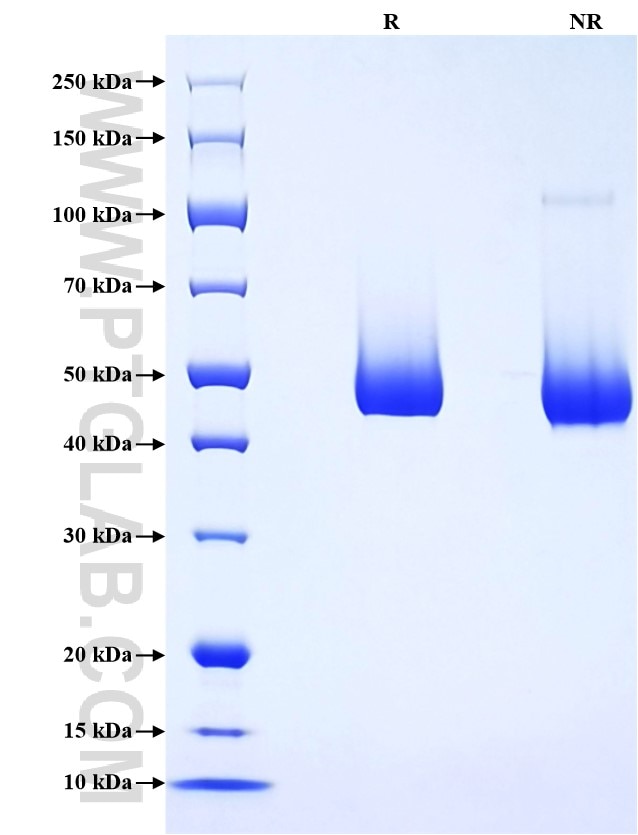Recombinant Human Serpin F1/PEDF protein (His Tag)
Species
Human
Purity
>90 %, SDS-PAGE
Tag
His Tag
Activity
not tested
Cat no : Eg1152
Validation Data Gallery
Product Information
| Purity | >90 %, SDS-PAGE |
| Endotoxin | <0.1 EU/μg protein, LAL method |
| Activity |
Not tested |
| Expression | HEK293-derived Human Serpin F1 protein Gln20-Pro418 (Accession# P36955) with a His tag at the C-terminus. |
| GeneID | 5176 |
| Accession | P36955 |
| PredictedSize | 45.4 kDa |
| SDS-PAGE | 45-55 kDa, reducing (R) conditions |
| Formulation | Lyophilized from 0.22 μm filtered solution in PBS, pH 7.4. Normally 5% trehalose and 5% mannitol are added as protectants before lyophilization. |
| Reconstitution | Briefly centrifuge the tube before opening. Reconstitute at 0.1-0.5 mg/mL in sterile water. |
| Storage Conditions |
It is recommended that the protein be aliquoted for optimal storage. Avoid repeated freeze-thaw cycles.
|
| Shipping | The product is shipped at ambient temperature. Upon receipt, store it immediately at the recommended temperature. |
Background
Serpin F1, also known as Pigment Epithelium-Derived Factor (PEDF) or Cell Proliferation-Inducing Gene 35 Protein (PIG35), is a multifunctional protein that belongs to the serpin family. This family of proteins is characterized by their highly conserved core structure, which is critical for their function as serine protease inhibitors. Serpin F1 is secreted and has been shown to strongly inhibit angiogenesis, making it a potent inhibitor of blood vessel growth. It also has anti-tumor and neurotrophic functions, playing a significant role in various biological processes including cell differentiation, tumor suppression, and neuronal protection. Serpin F1 is expressed in quiescent cells and has been implicated in the regulation of gene expression and cellular proliferation.
References:
1. J A Huntington. et al. (2011). J Thromb Haemost. 1:26-34. 2. Law RH. et al. (2006). Genome Biol. 7: 216. 3. Kaslik G. et al. (1997). Biochemistry. 36:5455–5464. 4. Huang X. et al. (2011). J Biol Chem. 286: 8740–8751.

